| TREVISO IN THE FIRST HALF OF 19TH CENTURY |
| |
Nov. 6, 1805:
 |
The French army regained control over town, after the Austrian army had left it because it was engaged by other fronts. |
| |
| Nov. 19, 1805: |
It was decreed the Monte di Pietà (Pawnshop) had to be sacked no more by the French troops. |
| |
| 1810: |
The French established the Botanical Garden, which had an educational objectives for the schools; but the Botanical Garden had already been in a state of decay in 1860. |
| |
| Dec. 25, 1810: |
The Trevisan University was opened again, the extinct academies were reactivated. |
| |
| Nov. 2, 1813: |
The Austrian regained control over Treviso after the French defeats in the Russian
campaign and in the Leipzig battle. |
| |
| April 7, 1816: |
The empress Maria Lodovica Beatrice, wife of Francesco I (Emperor of Austria), died in Verona. Her body, going to Vienna, stopped on its way in Cathedral (Duomo) of Treviso, where funeral service was celebrated. |
| |
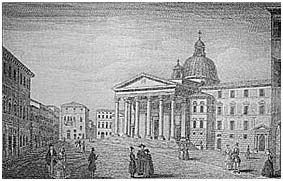
The Treviso Cathedral (Duomo) - 1846
Engraving by Antonio Nani.
(Biblioteca Comunale di Treviso)
|
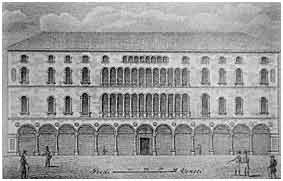
Palazzo Bressa - 1846
Engraving by Antonio Nani
(Biblioteca Comunale di Treviso) |
|
| |
| May 2, 1817: |
A famine caused an epidemic and thus a lazaretto was built near St. Martino’s area. |
| |
| 1825: |
The gymnasium, placed in the Convento di San Nicolò (St. Nicolò’s Monastery), was suppressed and it was moved to the bishop’s seminary and a primary school for boys was founded in the Monastery. |
| |
| 1827: |
The primary school for girls was established in St. Agostino, where there was the Somaschi’s Monastery. |
| |
| 1830: |
The Tempietto del Beato Enrico was erected in Via Canova. |
| |
| 1832: |
The present bridge of St. Margherita was built by one arch. |
| |
| |
|
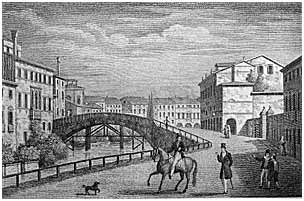
The bridge of Santa Margherita
Engraving by Antonio Nani.
(Biblioteca Comunale di Treviso) |
|
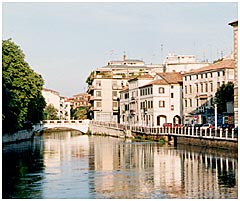
The bridge of Santa Margherita and the river Sile before the building of next bridge near the University. |
|
| |
| March 2, 1835: |
Francesco I, emperor of Austria, died and thus the formal funeral service was officiated in Duomo. |
| |
| April 7, 1835: |
Some nursery schools were founded; the first was opened on October 17, 1835, when Ferdinando I, new emperor of Austria, went to Treviso. |
| |
| Sept. 24, 1835: |
The building of a new Court, situated in front of Duomo, began; it was raised where
there was long ago an old storehouse falling within competence of Cathedral. The Palazzo Bressa and
the Palazzo Pola were demolished during the Austrian occupation. |
| |
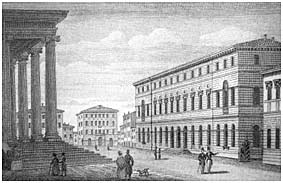
The Court of Treviso
Engraving by Antonio Nani
(Biblioteca Comunale di Treviso) |
|
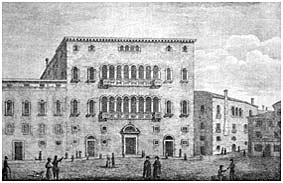
The Palazzo Pola in Treviso
Engraving by Antonio Nani
(Biblioteca Comunale di Treviso) |
|
| |
|
| October 3, 1846: |
The first gas lighting was inaugurated in Treviso. The Palazzo Onigo was restored in
October and it was called "Teatro di Società" and then it became "Teatro Comunale". |
| |
| March 22, 1848: |
The Austrian government of Venice resigned and the Republic was promulgated; the Trevisan
set up a temporary government also after these facts. Dr. Giuseppe Olivi, Podestà at the time, led it and he
asked the Austrian troops to leave the town; which happened. |
| |
| |
GO ON >>> |


